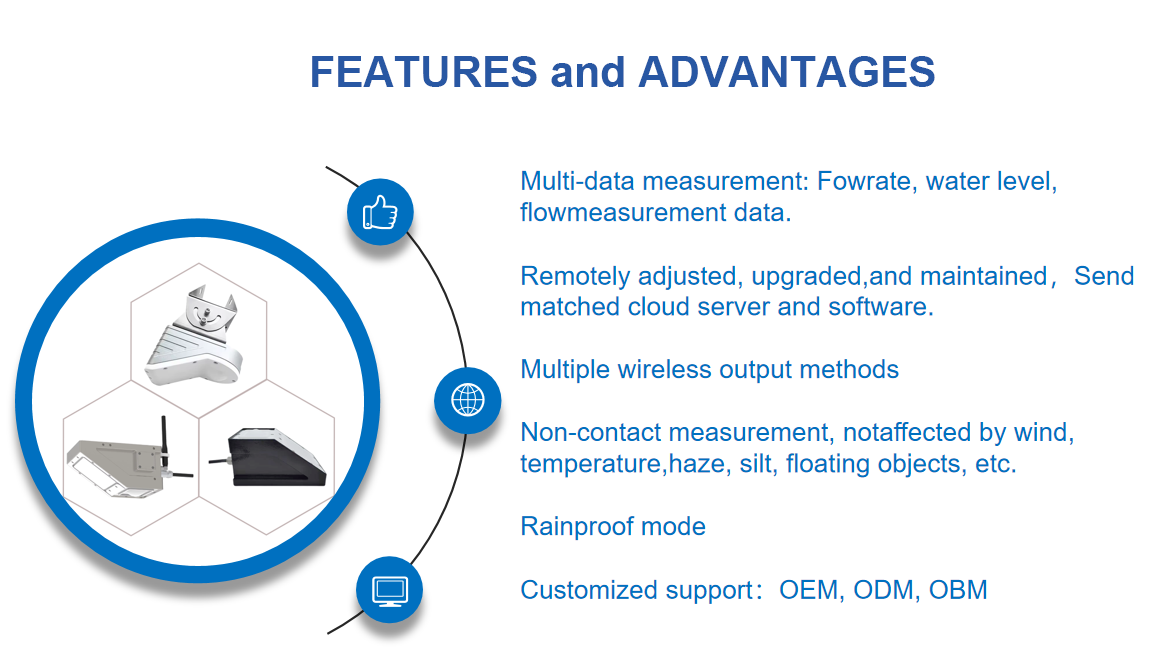With the continuous advancement of agricultural modernization, precision management and resource optimization have become essential trends in agricultural development. In this context, radar flow meters have emerged as highly efficient measurement tools, gradually finding widespread application in American agriculture, particularly in irrigation management and water resource monitoring. This case study focuses on a specific implementation of radar flow meters in U.S. agriculture.
Background
A large farm located in California specializes in fruit and vegetable cultivation, covering thousands of acres of dry and irrigated land. Faced with increasing water scarcity, the farm needed to improve its irrigation system to enhance water resource utilization efficiency and reduce waste. Additionally, farm managers aimed to precisely monitor water flow to develop scientifically based irrigation plans.
Implementation Process
Selection of Radar Flow Meters
After evaluating various flow measurement technologies, the farm decided to introduce radar flow meter sensors. These sensors measure water flow without contact, making them suitable for various fluids, and they are less affected by changes in temperature and pressure. The high precision and stability of radar flow meters made them an ideal choice.
Installation and Integration
Radar flow meter sensors were installed at key locations in the irrigation pipeline and integrated with the farm’s management system. By transmitting data in real time, the system could monitor the flow rate and volume of water while providing irrigation recommendations and optimization plans through data analysis software.
Practical Application
Irrigation Management
The farm used radar flow meters to monitor irrigation water flow in real time, ensuring each field received the appropriate amount of moisture. The data from the sensors enabled the farm to adjust its irrigation plans promptly, responding flexibly to crop growth stages and weather changes. Through precise irrigation, the farm effectively reduced water waste.
Preventing Over-Irrigation
With the data analysis from the radar flow meters, the farm was able to accurately identify instances of over-irrigation. In certain situations, due to weather changes or rapid fluctuations in soil moisture, the farm received timely alerts, preventing crop root rot caused by water accumulation.
Outcomes and Feedback
Since the implementation of radar flow meter sensors, the farm’s water resource utilization rate has improved by 30%, and crop yields have increased. Furthermore, farm managers reported a significant reduction in the complexity of irrigation management, leading to increased operational efficiency for staff.
Future Prospects
With the continuous progress of agricultural technology, the application prospects for radar flow meters are promising. In the future, the farm can combine big data and artificial intelligence technologies for deeper analysis of flow data, further optimizing irrigation schemes. Additionally, the use of radar flow meters is expected to expand into soil moisture monitoring and climate adaptability management.
Conclusion
The application of radar flow meter sensors on the California farm demonstrates how modern agriculture can leverage advanced technology to enhance the efficiency and accuracy of water resource management. This not only improves the growing environment for crops but also provides crucial support for sustainable agricultural development. With ongoing technological innovation, the role of radar flow meters in agriculture is set to write a new chapter.
Complete set of servers and software wireless module, supports RS485 GPRS /4g/WIFI/LORA/LORAWAN
Please contact Honde Technology Co., LTD.
Email: info@hondetech.com
Company website: www.hondetechco.com
Tel: +86-15210548582
Post time: Jul-31-2025


